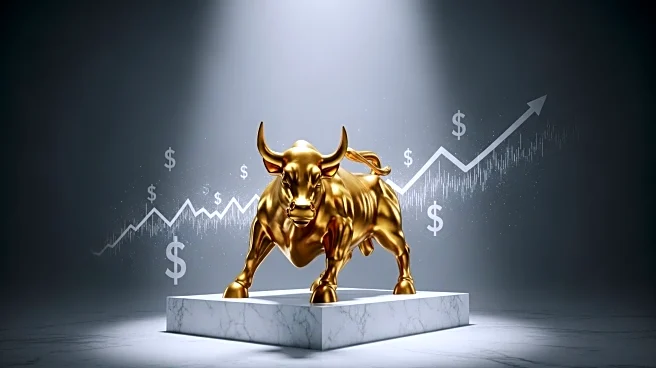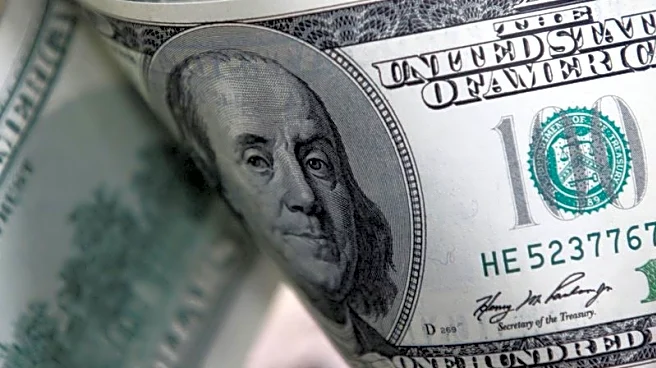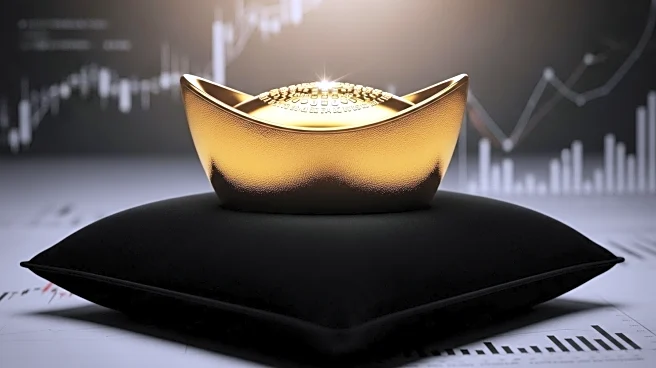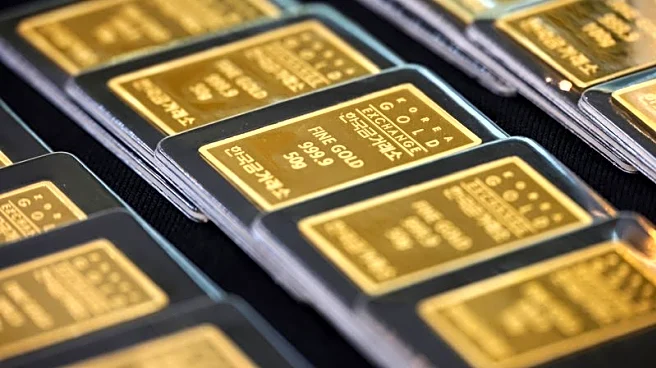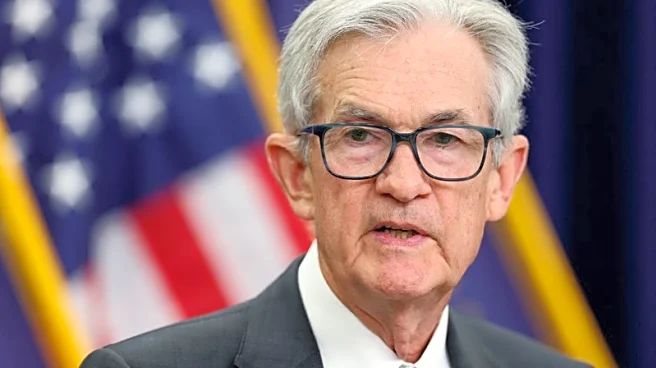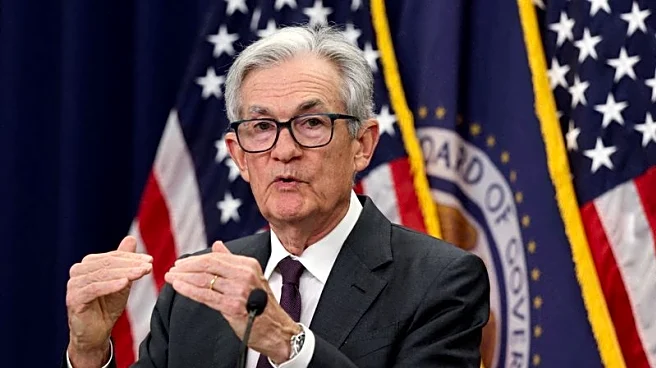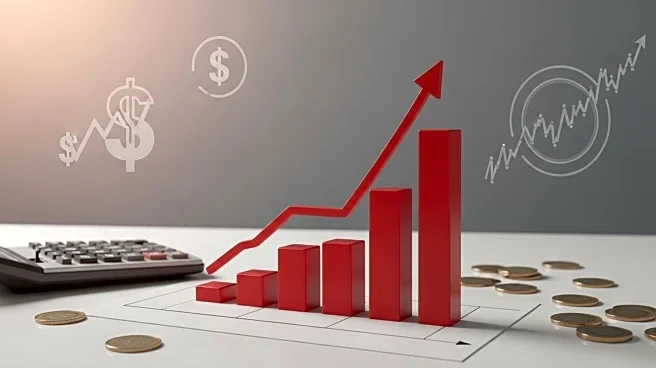What is the story about?
What's Happening?
Gold prices have surged in 2025, setting over 30 nominal records and reaching $3,674.27 per ounce, surpassing the inflation-adjusted peak from 1980. This rally underscores gold's role as a hedge against inflation and currency devaluation. Central banks are increasing gold reserves to diversify away from dollar-denominated assets. Morgan Stanley forecasts a further 5% rise in gold prices by year-end, targeting $3,800 per ounce. Gold has gained nearly 40% year-to-date, influenced by President Trump's tax cuts, trade policies, and influence over the Federal Reserve.
Why It's Important?
The gold rally reflects broader economic and geopolitical shifts, with investors seeking gold for inflation protection and as a gauge of central bank policies. The weakening U.S. dollar may provide further support to gold prices. The rally has benefited gold mining equities, with the NYSE Arca Gold Miners Index hitting a record high. Gold producers dominate the TSX30 list, highlighting the sector's strong performance. This trend indicates potential continued growth in gold investments and mining stocks.
What's Next?
As gold prices continue to rise, mining companies may see increased profitability and investment appeal. Analysts predict no clear signals of the rally peaking, suggesting sustained interest in gold as a safe-haven asset. Investors may focus on gold mining equities and related financial instruments to capitalize on the ongoing rally. The potential weakening of the U.S. dollar could further influence gold market dynamics.
Beyond the Headlines
The revival of gold as a preferred asset class signals a shift in market structure, with implications for global economic stability and financial strategies. Central banks' increased gold reserves reflect a strategic move to mitigate risks associated with dollar-denominated assets and geopolitical tensions. This trend may influence future monetary policies and international trade relations.
AI Generated Content
Do you find this article useful?
